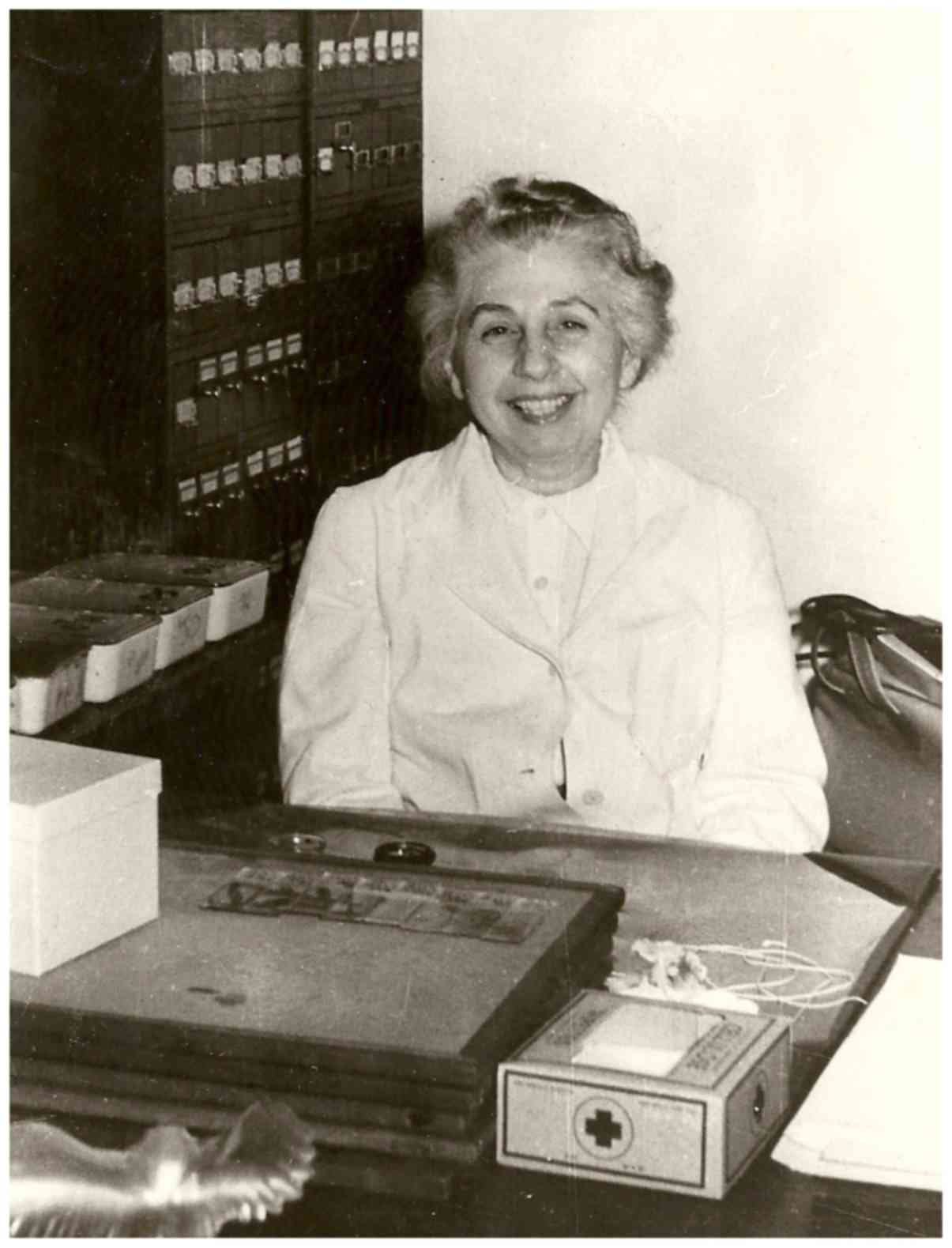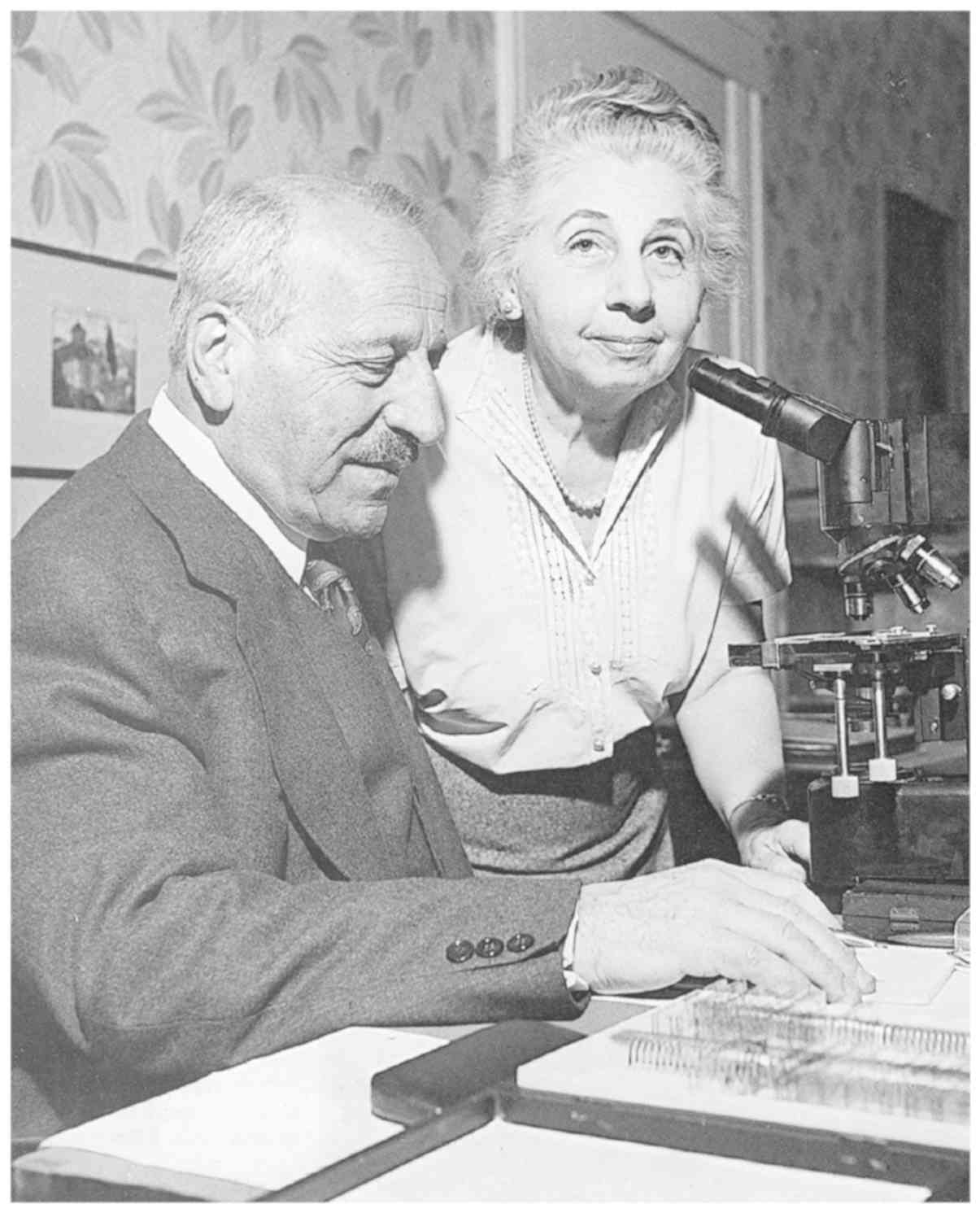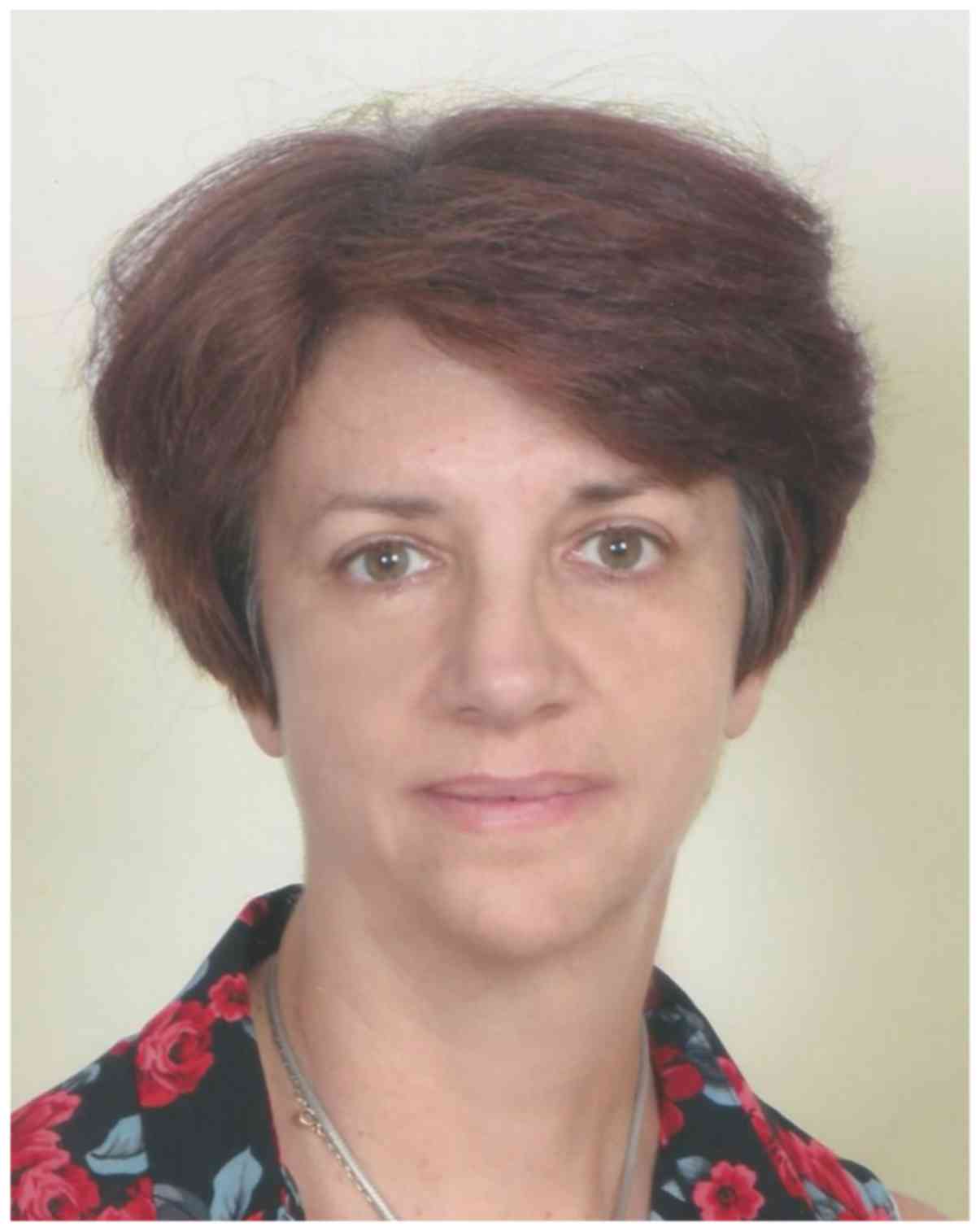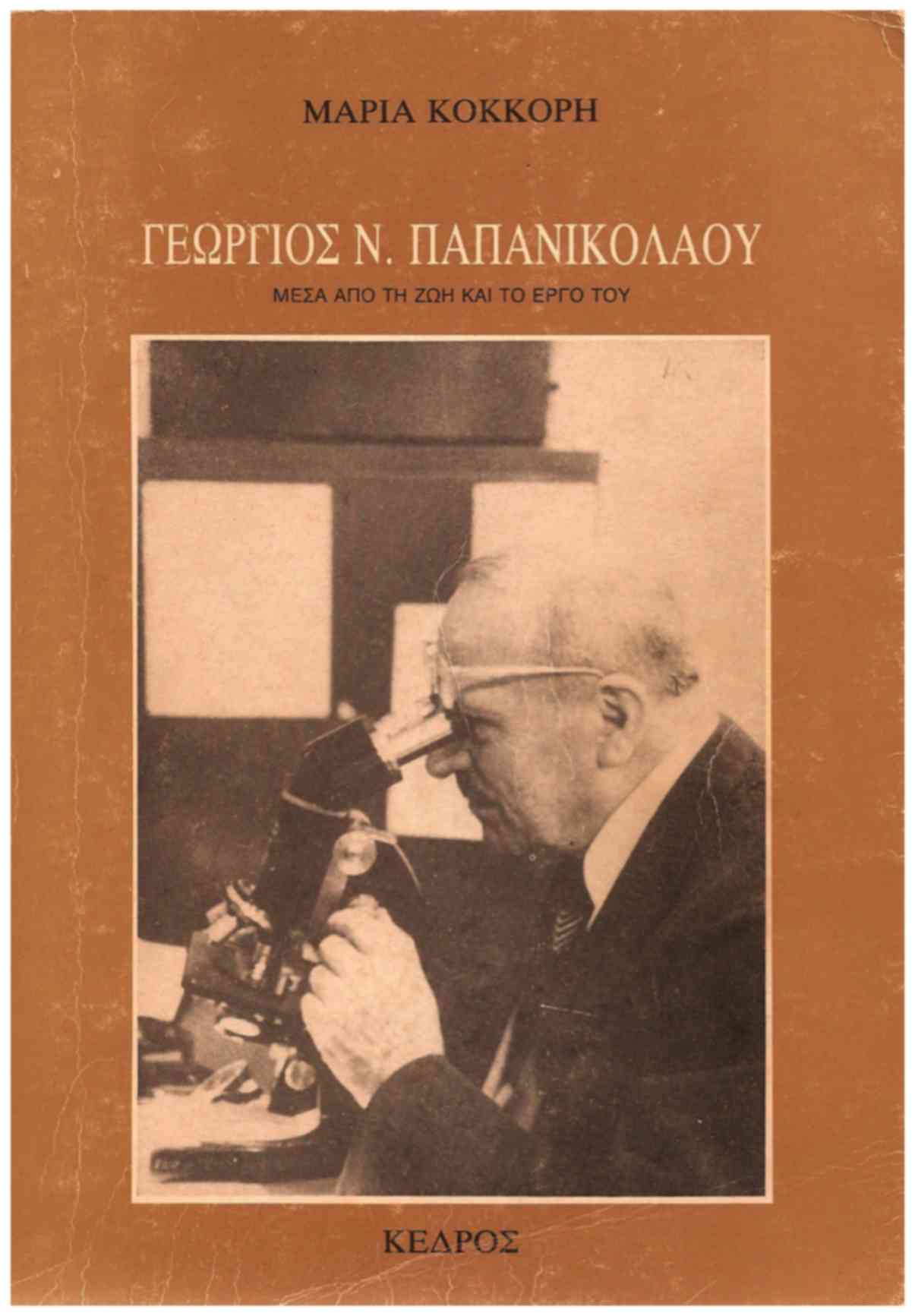Introduction
Born on the island of Euboea, Dr George N.
Papanicolaou (Kymi, Greece, 1883 - Miami Florida, USA, 1962), the
inventor of the Pap smear test and founder of Exfoliative
Cytopathology, is undoubtedly one of the greatest modern scientists
worldwide and the most significant Greek medical doctor of the
modern era (1–5). In 1904, at the age of 21, Dr George N.
Papanicolaou received his medical degree with honours from the
University of Athens School of Medicine and fulfilled his military
duties (1). It was then that he
assessed his return to his island to practice the medical
profession, as well as the prospect of becoming a military doctor.
However, both scenarios would be a personal defeat for him. In the
book of Maria Kokkori (Trikala, Greece, 1918 - Athens, Greece,
2012), Dr George N. Papanicolaou's words reflect his refusal to
practice the medical profession at that time in Greece (1): ‘It is impossible to practice a
profession; I prefer to kill myself… I can only indulge in
philosophy… No, I do not want to become a military doctor. I want
to stay free, to feel the joy of the struggle of life. I am not
scared by the sea. I want my freedom, my sweet freedom’. Since
then, his whole life remained devoted to science. He writes to his
parents (1): ‘My ideal is not to
become rich, or to be happy, but to work, to act, to create, to do
something worthy of an ethical and strong man’. Among other
thoughts, he writes about his self-discipline (1): ‘A man who strives to create a future
has no right to feel and to be nostalgic. Anyone who wants to
succeed must know how to drown the pulses of his heart’. He
also writes elsewhere (1): ‘The
danger came from myself. Doubts, weakness, some instincts, some
aristocratic tendencies; that was the great danger. Now that all
these are missing, there is absolutely no fear’. His whole life
has been characterised by his saying ‘I live to serve life’,
which has been inscribed on his bronze statue situated close to the
new Evripos bridge called ‘George N. Papanicolaou Bridge’; this
bridge is connecting the island of Euboea to the mainland
Greece.
Undoubtedly, the real reason why Dr George N.
Papanicolaou was absolutely dedicated to research, science and
humanity was his wife Mache Papanicolaou (Volos, Greece, 1890 -
Miami, Florida, USA, 1982). Her devotion to her husband, her
endless support during their first years in the USA, as well as
during the period before the approval of his test and her selfless
contribution to Dr George N. Papanicolaou's efforts were
invaluable, indeed (1–5). Recently, the student of Dr George N.
Papanicolaou, Dr Neda Voutsa-Perdiki, author of the book entitled
‘Dr George and Mache-Mary Papanicolaou - As I knew them’, said
about Mache (6): ‘His wife,
Mache-Mary Papanicolaou, offered him the main support during the
first years in the USA as well as during his research hard years.
She was always standing by him, as a ‘rock’, as a real ‘rock’.
Despite her short stature, she was always there to listen to him,
to tell him her opinion, to support him. She was his lifelong
dedicated companion. She was his whole life. She was always proud
of him. And he was always proud of her’.
In this article, which is dedicated to the memory of
Mache Papanicolaou (Figs. 1 and
2), we have the great honour to host
the testimony of one of the only living relatives of Dr George N.
Papanicolaou's family, Dr Julie Kokkori. Dr Kokkori (Fig. 3) is one of the grandchildren of Nasos
N. Papanicolaou (Kymi, Greece, 1880 - Athens, Greece, 1958), the
oldest brother of Dr George N. Papanicolaou. Her mother, Maria
Kokkori, niece of Dr George N. Papanicolaou, was the author of the
first book in the Hellenic literature on the life of Dr George N.
Papanicolaou entitled ‘George N. Papanicolaou: through his life and
work’. This book was published for the first time in 1985 by Kedros
Editions (Fig. 4), while in 2008, it
was translated into English (for more information, visit the
official website on the life of Dr George N. Papanicolaou created
by Dr Kokkori; www.dr-pap.com). In the context of
the ‘5th workshop on Paediatric Virology’, which will be held in
October 12th, 2019, in Sparta, Greece, Dr Kokkori will announce and
hand over the ‘2019 George N. Papanicolaou Humanitarian Award’ to
Professor George P. Chrousos, Professor Emeritus of Paediatrics and
Endocrinology at the University of Athens School of Medicine, in
Athens, Greece.
Questions and Answers
Question: Mache-Mary Papanicolaou has been
well described in the book of your mother, Maria Kokkori, entitled
‘George N. Papanicolaou: through his life and work’. What was her
real name, Mache or Mary? How did your mum used to call her?
Answer: Her name was Andromache Mavroyeni.
After her marriage to Dr George N. Papanicolaou, she got the
surname of her husband. She remained known in the USA as Mary due
to the difficulty her name ‘Andromache’ or ‘Mache’ had to be
pronounced correctly by the Americans. For this reason, the
Papanicolaou couple adopted the name ‘Mary’, honouring thus and the
day of her birth, 15th of August 1890. My mum was calling her ‘Aunt
Mache’ (Θεία Μάχη). Please note that her name ‘Andromache’ is
ancient Greek and means the battle against men.
Question: Who was Mache, where was she born
and how did she meet Dr George N. Papanicolaou?
Answer: Mache was the daughter of the officer
of the Hellenic Army, Aristarchos Mavroyenis, and she was a
descendant of the heroine of the Hellenic Revolution in 1821, Manto
Mavroyenous. She was born in Volos, Thessaly, where her family had
visited because of her father's duties. She met George for the
first time on one of her summer excursions with her family in Kymi
on the island of Euboea and they got married in Athens on September
15, 1910. As my mother, Maria Kokkori, writes in her book, Dr
George N. Papanicolaou found in Mache a character full of courage,
enormity, bravery and dignity. Their lives proved that his insight
was absolutely accurate.
Question: During their first years in the
USA, as well as during the period before the approval of Pap test,
she was standing by Dr George N. Papanicolaou as a ‘rock’, as a
real rock. How important was her support to Dr George N.
Papanicolaou?
Answer: In 1913, George and Mache departed
together for the USA, where they arrived just with $250. Mache,
always with dignity, worked in a tailor's shop, a grocery store, to
secure a livelihood. Later on, she became his driver, his
laboratory technician, his secretary and his valuable partner.
Mache remained for 52 years his devoted companion. At the
beginning, this path was full of difficulties, but ended up to a
scientific work recognized worldwide. In this long and laborious
path, Mache served as a devotional and indefatigable partner in the
research that Dr Pap had set as the purpose of his life. We are
used to say that behind every great invention is a great woman.
Mache was for George the hidden soul of his success. Women who
survive cervical cancer due to the Pap smear test globally feel
grateful to both, Mrs. and Dr Papanicolaou, indeed.
Question: She was an exceptional companion
following Dr George N. Papanicolaou's exhaustive rhythm of work at
Cornell University continuously for half a century. How difficult
was this, indeed?
Answer: It was extremely difficult,
long-lasting and intensive. George was a dedicated, hard-working
scientist. He did not take any holidays, he used to work seven days
a week. Mache would manage household and laboratory affairs, and
this was very difficult.
Question: In 1957, the couple decided to make
their first trip to Greece, after almost 44 years of continuing
research work in the USA. What were her memories from this
trip?
Answer: Excellent; she had enjoyed that trip.
Certainly, most of all, she had enjoyed the reception by our
relatives and friends in Kymi. The laid table at his house, the
delicious well-known figs, the famous ‘baklava’, but especially the
warm family atmosphere, were some of the memories that she was used
to recall until the end of her life. During that trip, she promised
to visit Greece, again, with George. However, on February 19, 1962,
George died of myocardial infarction, almost three months after
their arrival in Miami. She did not visit Greece again.
Question: She had never made any comment
about the failure of Dr George N. Papanicolaou to be nominated for
the Nobel Prize. Was this another proof of the quality of her
personality?
Answer: Mache was a very kind woman. The
value of her personality was of high quality. No, she had never
made any comment about the Nobel Prize case. However, this was not
a matter of failure. As Dr Neda Voutsa-Perdiki has explained in her
recent interview, this was a matter of unluckiness, not
failure.
Question: When Dr George N. Papanicolaou
accepted the proposal to run a cancer research Institute in Miami
Beach, Florida, the couple moved to Florida at the end of 1961.
This was another critical life decision…
Answer: Yes, she followed George's decision
for one more time. After nearly 50 years at Cornell, the decision
to leave New York was for Mache a very difficult one, indeed.
Question: How did she spend the rest of her
life, after Dr George N. Papanicolaou's death?
Answer: After her husband's sudden death on
February 19, 1962, Mache decided not to leave Miami, even though
her life there would be extremely lonely. Thus, committed to Dr
George N. Papanicolaou's work, she felt that she had to stay there
to attend the development of the Institute. Every morning, she
continued to visit the Dr Pap Lab in Miami and supervise its
function. She was proud that Dr George N. Papanicolaou's dream was
fulfilled, even though this happened after his death.
Question: What has been the most significant
honour or award that she has received up to date?
Answer: Mache was present in almost all the
events that were held to honour Dr George N. Papanicolaou, after
his death. On May 18, 1978, the White House organized an official
ceremony on the occasion of the issuing of the American stamp for
Dr George N. Papanicolaou. During this event, she was honoured by
the White House and personally by the wife of the US President,
Rosalynn Carter, and Mrs. Pap made a short, but extremely touching
speech. She passed away on October 13, 1982, at the age of 92.
Since then, several events honouring the memory of Mache
Papanicolaou have been performed. In the near future, there will
also be a film about the life of Mache.
Question: In the recent book by Dr Neda
Voutsa-Perdiki, the author describes Mache welcoming her. What was
her contribution to medical students and young medical scientists
of her era?
Answer: She was always very supportive to
young scientists, who were visiting Dr George N. Papanicolaou's Lab
at Cornell University, and she was always very glad to welcome any
new physician, who would ask to be trained by them. I think that
she was inspired by Dr George N. Papanicolaou's spirit to
disseminate and teach his Pap test, to as many scientists as
possible and to help them during their training.
Question: If Mache lived today, would she
support the scientific efforts of the Paediatric Virology Study
Group (PVSG) as well as the newly founded Institute of Paediatric
Virology (IPV) based on the island of Euboea in Greece?
Answer: First of all, I consider your project
run by a group of young paediatricians and junior researchers, as
well as supported by so distinguished worldwide experts as very
significant. Your scientific attempt to offer your ideas on the
scientific field of Paediatric Virology to the international
medical community and to create a global initiative in Greece, on
the homeland of George and Mache Papanicolaou, is fantastic,
indeed, and you deserve congratulations for this. Regarding your
question, Mache would certainly have been very supportive to you as
to every young doctor trying the best for science and humanity.
Today, more than ever before, a scientist, who lives in the
province, can be a citizen of the word. The evolution of technology
and the ever-expanding applications of the internet make it easier
than ever for a global targeting initiative, which depends on the
capabilities of its members, to be based on the homeland island of
George and Mache Papanicolaou. I wish you all the best in your
scientific efforts.
Question: Thank you for this great honour to
prepare together this article dedicated to the memory of Mache
Papanicolaou as well as for your wishes! We look forward to your
honorary presence in Sparta in October.
Acknowledgements
This article is published in the third supplement
issue of the Experimental and Therapeutic Medicine, which is
dedicated to Paediatric Virology. This edition is performed in the
context of the ‘5th workshop on Paediatric Virology’ (Sparta,
Greece, October 12, 2019) organized by the Paediatric Virology
Study Group (PVSG) and supported by the Department of Clinical
Virology of the University of Crete School of Medicine and the
First Department of Paediatrics of the University of Athens School
of Medicine. We would like to thank Dr Julie Kokkori for this
educational and inspirational interview-style article. We would
also like to thank all the members of the PVSG for their
interesting questions to Dr Kokkori and their valuable
comments.
References
|
1
|
Kokkori M: George N. Papanicolaou: through
his life and workKedros Editions; Athens: 2005, (In Greek).
PubMed/NCBI
|
|
2
|
Voutsa-Perdiki N: Dr George and Mache-Mary
Papanicolaou - As I knew themMedical Council of Athens; Athens:
2016, (In Greek).
|
|
3
|
Mammas IN and Spandidos DA: George N.
Papanicolaou (1883–1962): Fifty years after the death of a great
doctor, scientist and humanitarian. J Buon. 17:180–184.
2012.PubMed/NCBI
|
|
4
|
Mammas IN and Spandidos DA: George N.
Papanicolaou (1883–1962): Studying his first published article in
Science 100 years on. J Buon. 20:16432015.PubMed/NCBI
|
|
5
|
Mammas IN and Spandidos DA: Four historic
legends in human papillomaviruses research. J Buon. 20:658–661.
2015.PubMed/NCBI
|
|
6
|
Mammas IN and Spandidos DA: George N.
Papanicolaou (1883–1962), an exceptional human, scientist and
academic teacher: An interview with Dr Neda Voutsa-Perdiki. Exp
Ther Med. 14:3346–3349. 2017. View Article : Google Scholar : PubMed/NCBI
|


















